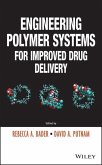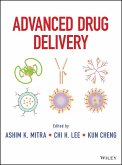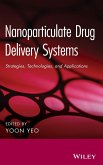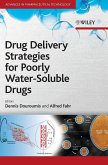This book presents ways to analyze complex bioprocesses and drug delivery systems using control theory. Filled with detailed examples, case studies, computer projects, and step-by-step solutions to numerical problems using computational software, it addresses issues and solves problems that dominate both fields. This book builds on the new focus of providing problems in the biological area and features discussion on the application of control theory to analyze controlled-release devices.
Enables readers to apply process dynamics and control theory to solve bioprocess and drug delivery problems
The control of biological and drug delivery systems is critical to the health of millions of people worldwide. As a result, researchers in systems biology and drug delivery rely on process dynamics and control theory to build our knowledge of cell behavior and to develop more effective therapeutics, controlled release devices, and drug administration protocols to manage disease.
Written by a leading expert and educator in the field, this text helps readers develop a deep understanding of process dynamics and control theory in order to analyze and solve a broad range of problems in bioprocess and drug delivery systems. For example, readers will learn how stability criteria can be used to gain new insights into the regulation of biological pathways and lung mechanics. They'll also learn how the concept of a time constant is used to capture the dynamics of diffusive processes. Readers will also master such topics as external disturbances, transfer functions, and input/output models with the support of the author's clear explanations, as well as:
Detailed examples from the biological sciences and novel drug delivery technologies
160 end-of-chapter problems with step-by-step solutions
Demonstrations of how computational software such as MATLAB and Mathematica solve complex drug delivery problems
Control of Biological and Drug-Delivery Systems for Chemical, Biomedical, and Pharmaceutical Engineering is written primarily for undergraduate chemical and biomedical engineering students; however, it is also recommended for students and researchers in pharmaceutical engineering, process control, and systems biology. All readers will gain a new perspective on process dynamics and control theory that will enable them to develop new and better technologies and therapeutics to treat human disease.
Enables readers to apply process dynamics and control theory to solve bioprocess and drug delivery problems
The control of biological and drug delivery systems is critical to the health of millions of people worldwide. As a result, researchers in systems biology and drug delivery rely on process dynamics and control theory to build our knowledge of cell behavior and to develop more effective therapeutics, controlled release devices, and drug administration protocols to manage disease.
Written by a leading expert and educator in the field, this text helps readers develop a deep understanding of process dynamics and control theory in order to analyze and solve a broad range of problems in bioprocess and drug delivery systems. For example, readers will learn how stability criteria can be used to gain new insights into the regulation of biological pathways and lung mechanics. They'll also learn how the concept of a time constant is used to capture the dynamics of diffusive processes. Readers will also master such topics as external disturbances, transfer functions, and input/output models with the support of the author's clear explanations, as well as:
Detailed examples from the biological sciences and novel drug delivery technologies
160 end-of-chapter problems with step-by-step solutions
Demonstrations of how computational software such as MATLAB and Mathematica solve complex drug delivery problems
Control of Biological and Drug-Delivery Systems for Chemical, Biomedical, and Pharmaceutical Engineering is written primarily for undergraduate chemical and biomedical engineering students; however, it is also recommended for students and researchers in pharmaceutical engineering, process control, and systems biology. All readers will gain a new perspective on process dynamics and control theory that will enable them to develop new and better technologies and therapeutics to treat human disease.
"This text -- featuring examples from the biological sciences, including novel drug-delivery systems -- will help students and pharmaceutical researchers to develop a better understanding of process dynamics and control theory, so that they can analyze and solve a variety of problems in bioprocess and drug-delivery systems." (Chemical Engineering Progress, 21 May 2013)








